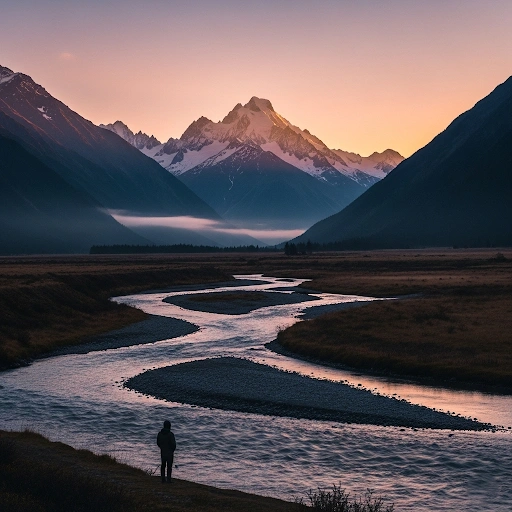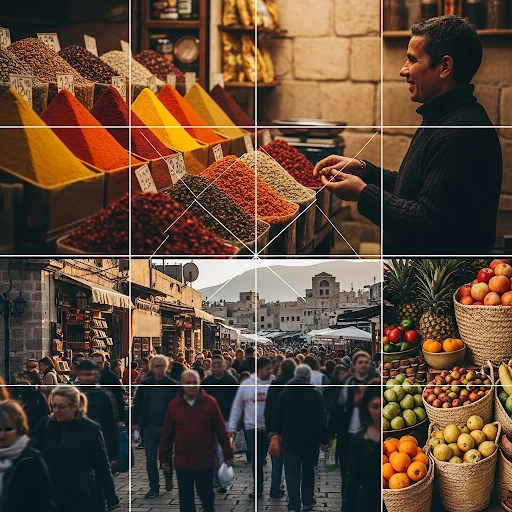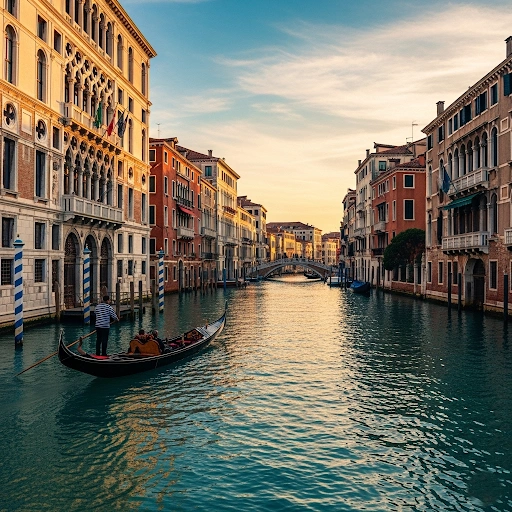Go beyond simple snapshots by exploring DSLR photography composition techniques that bring depth and balance to your shots. These DSLR composition techniques help you move past ordinary captures and highlight the true essence of your travels. By practicing DSLR photography composition techniques, you’ll begin to see how light, framing, and perspective work together. Learn these timeless DSLR photography composition techniques and watch your photos transform from ordinary to extraordinary.
Mastering DSLR photography composition techniques is the secret to turning ordinary travel shots into powerful visual stories. With consistent use of DSLR photography composition techniques, you’ll start to notice lines, balance, and framing everywhere you go. These DSLR photography composition techniques for travel help you move beyond simple snapshots and create images that feel intentional. By practicing DSLR photography composition techniques regularly, your photos will not only document places but also capture the emotions within them.
- What is Composition in Photography?
- Why Strong Composition is Your Secret Weapon
- The Core Techniques: Your Compositional Toolkit
- Putting It All Together: Two Travel Scenarios
- Common Composition Mistakes to Avoid
- Expert Tips for Better Travel Compositions
- Frequently Asked Questions (FAQ)
- Conclusion: See the World Like a Photographer
What is Composition in Photography?
In essence, composition is the art of arranging the visual elements within your photograph, and this is where DSLR photography composition techniques come into play. It’s how you decide what to include, what to exclude, and where to place your subject, making DSLR photography composition techniques for travel a valuable skill to master. This visual language, shaped by applying DSLR photography composition techniques, helps guide the viewer’s eye, create a mood, and tell a story. With consistent practice of DSLR photography composition techniques, even a chaotic scene can be transformed into a harmonious image that draws attention and evokes emotion.
Composition as Visual Grammar
Think of composition as the grammar of a visual language, and DSLR photography composition techniques are the rules that bring clarity. Just as grammar provides structure to a sentence, DSLR photography composition techniques provide structure to a photograph. Without applying DSLR photography composition techniques, your image might feel like a jumble of “words” without meaning. But with strong DSLR photography composition techniques, you can form a coherent and compelling “sentence” that conveys your idea or feeling effectively.
In 2025, while camera technology and AI-powered editing tools are more advanced than ever, the timeless value of DSLR photography composition techniques still stands strong. These fundamentals are the human element of photography that technology can’t replicate, and every photographer benefits from practicing DSLR photography composition techniques in real-world scenarios. As you explore travel photography tips, integrating DSLR photography composition techniques will shape the way you frame each moment. Ultimately, mastering DSLR photography composition techniques is the single most impactful skill to elevate your work and define your unique style.

Why Strong Composition is Your Secret Weapon
Focusing on composition does more than just make your photos “look nice.” By applying DSLR photography composition techniques, you begin to see patterns, balance, and stories hidden in everyday scenes. Practicing DSLR photography composition techniques changes not only how you capture images, but also how viewers connect with them on an emotional level. Over time, these DSLR photography composition techniques help transform casual snapshots into meaningful frames. In the end, embracing DSLR photography composition techniques fundamentally shifts how you view the world and how others experience your work.
Create Visually Compelling and Balanced Images
Good composition brings a sense of order and harmony to your photos. It helps to balance the visual weight of different elements, creating an image that feels pleasing and intentional, rather than accidental and chaotic. This involves considering factors like the size, color, and placement of objects to ensure no single part of the image overpowers the rest, unless that is the specific intention.
Guide the Viewer’s Eye and Tell a Story
Through techniques like leading lines and framing, you can control how a person looks at your photograph. You can lead them on a visual journey, starting from a point of interest, moving through the scene, and landing on your main subject. This turns your photo from a static image into a narrative experience.
Evoke Emotion and Create Impact
Compositional choices directly influence the mood of a photo. Placing a subject in a vast, empty space can create a feeling of solitude, while a tight frame can create a sense of intimacy or tension. Mastering these techniques allows you to intentionally craft the emotional impact of your images, a skill as crucial as the professional skills of communication and influence.
The Core Techniques: Your Compositional Toolkit
These are the foundational “rules” of composition. Think of them not as rigid laws, but as proven guidelines. Learn them, practice them, and then learn when to break them.
1. The Rule of Thirds
This is the first rule every photographer learns. Imagine your frame is divided into nine equal rectangles by two horizontal and two vertical lines. The rule of thirds suggests that you should place your key elements along these lines, or at the points where they intersect. Placing your subject off-center creates a more dynamic and visually interesting image than placing it directly in the middle.
2. Leading Lines
Use natural lines in the scene to lead the viewer’s eye towards your main subject. These can be roads, rivers, fences, pathways, or even the architectural lines of a building. Leading lines add depth and a sense of direction to your photograph. Look for different types of lines: S-curves can create a sense of grace and flow, while diagonal lines can add dynamic energy.
3. Framing
Use elements in the foreground to create a “frame within a frame” around your subject. This could be a doorway, a window, an overhanging tree branch, or an archway. Framing adds context, creates a sense of depth, and draws more attention to your main point of interest. Frames can be hard (like a window) or soft (like shadows or foliage).
4. Symmetry and Patterns
Look for symmetry and repeating patterns in your environment. This can create a powerful sense of harmony and visual rhythm. Sometimes, breaking a pattern or symmetry with a single, unique element can also create a very strong focal point.
5. Depth of Field (Foreground, Middleground, Background)
Create a sense of three-dimensionality in your two-dimensional photo by including elements in the foreground, middleground, and background. This technique, especially popular in landscape photography, gives the viewer a sense of being present in the scene. A strong foreground element can anchor the photo and provide a starting point for the viewer’s journey through the image.

6. The Golden Ratio and Spiral
A more advanced concept related to the rule of thirds, the golden ratio (approximately 1.618) is a mathematical ratio found in nature and art that is considered aesthetically pleasing. The Fibonacci spiral is a visual representation of this. While more complex to visualize in the field, understanding this concept can help you create compositions with a natural, organic flow.
7. Triangles and Diagonals
Using triangular shapes and diagonal lines in your composition can create a sense of dynamic tension and movement. A group of three subjects can form a triangle, and diagonal lines can lead the eye through the frame more energetically than horizontal or vertical lines.
8. Figure to Ground
This principle involves separating your subject (the figure) from the background (the ground) to avoid visual clutter. This can be achieved through a shallow depth of field (blurring the background), using contrasting colors or brightness, or placing your subject against a simple, uncluttered background.
Putting It All Together: Two Travel Scenarios
Scenario 1: A Scene in Venice
Imagine you’re standing on a bridge in Venice, looking down a canal. A gondola is approaching. How do you move from a simple snapshot to a compelling photograph?
- The Snapshot: You stand in the middle of the bridge, point your camera straight down the canal, and take a photo with the gondola dead center. The photo is okay, but it’s flat and predictable.
- The Composed Photograph:
- You apply the Rule of Thirds by moving so the canal runs along the right vertical line, not the center.
- You use the canal itself and the buildings on either side as Leading Lines, all pointing towards the approaching gondola.
- You step back slightly and use the arch of the bridge you’re standing under to create a natural Frame around the top of the scene.
- You wait for the moment the gondola crosses one of the intersection points of the rule of thirds grid.
The result is a photo that is not just *of* a gondola in Venice, but one that tells a story, has depth, and guides the viewer’s eye through the scene with intention.

Scenario 2: A Bustling Market in Marrakesh
Now imagine a different challenge: a crowded, chaotic market scene. You want to capture a portrait of a spice vendor.
- The Snapshot: You take a quick photo from a distance. The vendor is small in the frame, lost in the crowd and the vibrant colors of the market.
- The Composed Photograph:
- You use the Figure to Ground principle. You switch to a prime lens with a wide aperture (like f/1.8) to create a shallow depth of field, blurring the busy background and making the vendor pop.
- You apply the Rule of Thirds by placing the vendor on the left vertical line, looking into the open space on the right of the frame.
- You use the colorful piles of spices in the foreground to add Depth and context to the scene.
Common Composition Mistakes to Avoid
1. Centering Every Subject
While a centered subject can be powerful for symmetrical scenes, overusing it leads to static and uninteresting photos. Consciously practice placing your subject off-center using the rule of thirds.
2. Ignoring the Background
A distracting background can ruin an otherwise great photo. A telephone pole that looks like it’s growing out of someone’s head or a bright, clashing color can pull attention away from your subject. Always take a moment to scan the entire frame before you press the shutter.
3. A Tilted Horizon
Unless it’s a deliberate artistic choice, a crooked horizon line (especially in landscapes and seascapes) can make a photo feel unbalanced and amateurish. Use your camera’s built-in level or the grid display to keep your horizons straight.
4. Not Paying Attention to the Edges of the Frame
It’s easy to get tunnel vision on your subject. Always check the edges of your frame for distracting elements that are halfway in or out of the shot. A slight adjustment to your position can often create a much cleaner composition.
5. Forgetting the Human Element in Landscapes
A vast landscape can be beautiful, but adding a person to the scene can provide a sense of scale and a focal point for the viewer to connect with. A small figure in a grand landscape can emphasize its vastness and create a more compelling story.
Expert Tips for Better Travel Compositions
- Change Your Perspective: Don’t just shoot from eye level. Get down low to the ground for a dramatic angle, or find a high vantage point for a sweeping overview. A simple change in perspective can completely transform a scene.
- Look for “Negative Space”: Negative space is the empty area around your subject. Using it effectively can help your subject stand out and create a sense of simplicity and elegance.
- Fill the Frame: Sometimes, the best composition is to get closer to your subject, eliminating all distractions and filling the entire frame with their details. This is especially effective for portraits and abstract shots.
- The Power of Light and Shadow: Light is a compositional element. Use the direction and quality of light to create mood, reveal texture, and guide the eye. Long shadows during the golden hour can act as powerful leading lines.
- Use Color Theory: Understand basic color theory. Use complementary colors (like blue and orange) to create a vibrant, high-contrast image, or use analogous colors (colors next to each other on the color wheel) for a more harmonious feel.
- Pre-visualization: The best photographers often “see” the photo in their mind before they even raise the camera. Practice looking at a scene and mentally composing the shot. This will make you a more intentional and efficient photographer.
- Secure Your Gear: While not a composition tip, securing your expensive DSLR gear is crucial for peace of mind while traveling. It’s wise to understand the principles of securing valuable assets, which you can read about in this guide on selecting secure tools.
Frequently Asked Questions (FAQ)
Q: Do I need to use these rules all the time?
A: No. The best photographers know the rules so they can break them effectively. Once you understand why the rule of thirds works, you’ll know when a centered composition is more powerful. Think of them as a starting point, not a creative straitjacket.
Q: What’s the best lens for travel photography composition?
A: There’s no single “best” lens, but a versatile zoom lens (like a 24-70mm) is a great all-rounder because it allows you to easily change your framing and composition without having to move your feet. A wide-angle lens is great for landscapes, while a prime lens (like a 50mm) is excellent for portraits.
Q: Can I fix bad composition with cropping later?
A: To some extent, yes. Cropping can help you apply the rule of thirds after the fact. However, it’s always best to get the composition right “in-camera.” Cropping reduces the resolution of your image and you can’t fix a distracting background or a missed framing element in post-production.
Q: How does composition change for different types of travel (e.g., city vs. nature)?
A: The principles are the same, but the elements change. In a city, you’ll look for architectural leading lines and frames. In nature, you’ll use rivers, trees, and mountain ranges. The key is to adapt the universal rules to your specific environment.
Q: What are some good exercises to practice composition without a camera?
A: “Frame” scenes with your hands as you walk around. Watch movies and pause on shots you find compelling, then analyze the composition. Look at the work of famous photographers and try to deconstruct how they arranged their shots.
